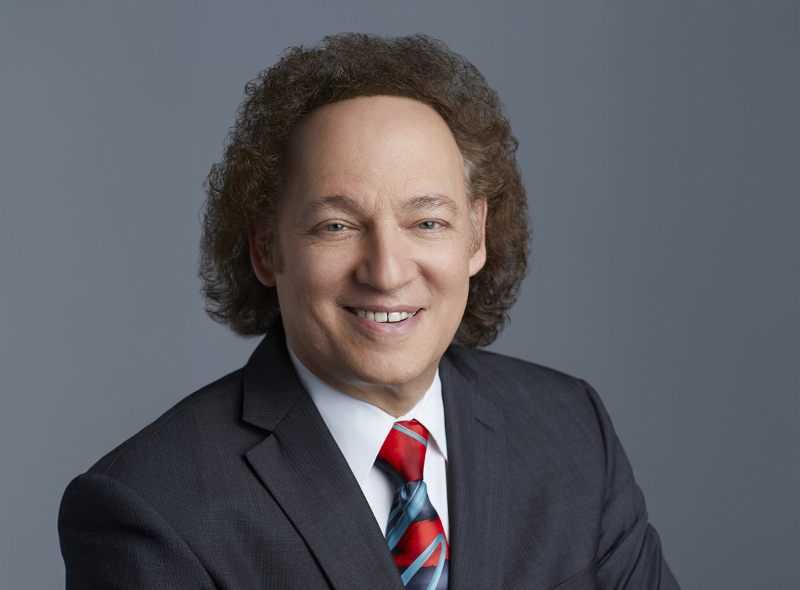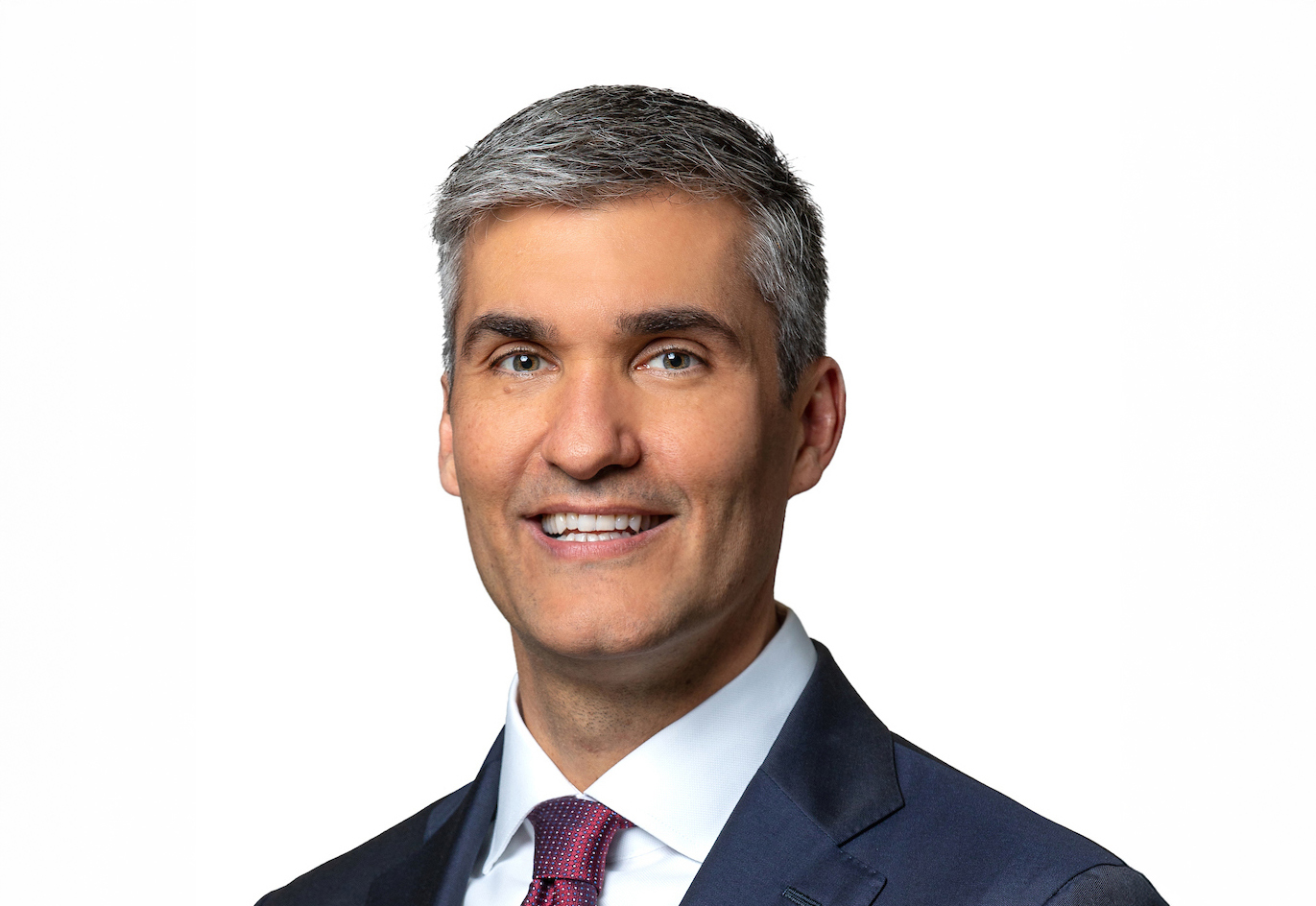Geographic Atrophy: What You Need to Know
Featuring
Dr. Gayatri S. Reilly
Retina Specialist, The Retina Group of Washington





Dr. Gayatri S. Reilly
Retina Specialist, The Retina Group of Washington

The telephone discussion features Dr. Gayatri S. Reilly of The Retina Group of Washington, who has excelled in research, patient care, and educating other eye care professionals about treating diseases such as age-related macular degeneration (AMD).
Please note: This Chat has been edited for clarity and brevity.
MICHAEL BUCKLEY: Hello, I am Michael Buckley from BrightFocus Foundation. Welcome to today’s BrightFocus Chat, “Geographic Atrophy: What You Need to Know.” If today is your first time on a BrightFocus Chat, welcome. Let me take a moment to tell you a little bit about BrightFocus and what we will do on today on our Chat.
BrightFocus Foundation funds some of the top researchers in the world. We support brilliant scientists around the globe who are trying to find cures for macular degeneration, glaucoma, and Alzheimer’s disease. We are able to share the latest news from these scientists with families who are impacted by these diseases. Today’s BrightFocus Chat is one way of sharing information from the fields of health and science.
Today, we are very fortunate to be joined by Dr. Gayatri Reilly of The Retina Group of Washington. Those of you who have been on previous Chats may recognize Dr. Reilly as someone who has been with us before and has been very, very helpful. We certainly appreciate her joining us.
Dr. Reilly, I want to thank you for returning to the BrightFocus Chats. We are thrilled to have you back. I was wondering if you could start off with a little bit about what you do, your background, and an overview of geographic atrophy.
DR. REILLY: Sure. Well, thanks again for inviting me back. I really enjoy the opportunity to speak on these topics. As mentioned, I work for The Retina Group of Washington. We serve 14 offices in the Maryland, DC, and Virginia area. We serve patients with a variety of retinal conditions.
One of the most common retinal conditions, as you know, which starts to affect patients as they get older, is macular degeneration. Macular degeneration affects a growing number of patients, especially as they approach the ages of 55 and 65.
Macular degeneration can be broken down into two main forms. The most common form, about 85 percent of macular degeneration, is what we consider dry, with the remainder, about 15 percent, being wet macular degeneration.
One of the most common questions patients always ask is, “I have dry macular degeneration. Is that the good kind?” I hesitate labeling either dry or wet macular degeneration as a better or worse form of the disease process because it is all in a spectrum. All patients start off as dry and along the spectrum of macular degeneration is when they can start to develop the more advanced forms of the disease, which include geographic atrophy and wet macular degeneration.
In this talk, we will discuss mostly geographic atrophy: what it is and how it can affect your vision. Hopefully we can touch on some of the upcoming treatments for it.
Geographic atrophy is when the center portion of the vision, the macula, starts to lose the actual cells in the retinal layers. The cells that are the most crucial for your vision are the photoreceptors, which are the rods and cones. They basically process the light and send all of that information on to your brain. Geographic atrophy represents a degeneration of these cells that eventually leads to the death of these rods and cones.
What you end up seeing clinically is that you have these large areas where the macula looks extremely thin, compared to the rest of the healthier and surrounding retinal tissue. Before I continue about it, do you have any particular areas you want me to focus on?
MICHAEL BUCKLEY: Yes. Just a few basic questions. Why is it called geographic atrophy?
DR. REILLY: It has to do with the sense of how it looks when we look at this area. “Geographic” defines the look, like a continent- or island-shaped area of abnormal tissue when we look into the macula. “Atrophy” represents basically just the loss or degeneration of the cells in that particular area.
MICHAEL BUCKLEY: I believe you said that geographic atrophy is often the most common form of dry AMD. If somebody hears geographic atrophy from their physician, should they or should they not think that it is the same as AMD? How should someone sort out those two terms in their mind?
DR. REILLY: I like to separate macular degeneration. Most commonly, we say dry and wet. Geographic atrophy is a form of dry macular degeneration. But to me, and more importantly what is more relatable to the patient, is separating it into categories of severity of macular degeneration. So you can have mild, you can have intermediate macular degeneration, and you can have advanced forms of macular degeneration. Geographic atrophy falls into the advanced forms of macular degeneration.
Typically, we hope that during your frequent eye exams, macular degeneration will be caught in the earlier stages, either in the mild or intermediate stages. Geographic atrophy is added into this advanced form, which wet macular degeneration is also a part of. You can have significant symptoms with geographic atrophy because it is now a much later or more advanced form of macular degeneration.
MICHAEL BUCKLEY: That is good to know. It is helpful for listeners to see how it progresses. If someone said they were having trouble seeing all of the letters in a word or maybe seeing all of a person’s face when they look at them, could that be a sign of geographic atrophy?
DR. REILLY: Absolutely. That is one of the most classic symptoms of it—what we call a scotoma. It is basically a blind spot in the central vision, which is represented by an area where those cells are no longer there. Typically, the patient will be able to see—in one word, they might be able to see the first letter or last two letters, but right in the middle they are losing those additional letters in that word. Or, when you are looking at a face you can see the ears or the hair, but you are having much more trouble identifying their eyes or nose more centrally.
MICHAEL BUCKLEY: I think that would be a pretty anxiety-inducing situation. If that is happening to someone, what type of tests should they make sure they get when they see an eye care professional?
DR. REILLY: This is where the eye care community has done such a terrific job in terms of screening. All patients need to get a dilated fundus examination. The ophthalmetric community has done a great job with taking fundus photos, taking photos of the retina, or getting a dilated exam where you can truly identify whether you have the early stages or more advanced stages of macular degeneration. That is the basic part of the eye exam. You have your vision checked, you have your eye pressure checked, but you do need to have a dilated exam in order to identify these changes.
MICHAEL BUCKLEY: To that end, Dr. Reilly, when someone thinks that they may have geographic atrophy or another form of macular degeneration, what are some of the things that are most important that they communicate clearly to you or one of your colleagues?
DR. REILLY: One is family history. I absolutely ask every patient whether there has been any family history of either macular degeneration that is known, or just other causes of difficult vision that is in the family. Macular degeneration, as we spoke about earlier, is very genetic. Having patients know this and involved—asking parents and siblings, knowing if you have a family history of it—you should always ask “Do you have any signs of macular degeneration?” I think it is a very valid and important question that your eye care provider will encourage you to ask.
MICHAEL BUCKLEY: What do you do if a person, for whatever reason, doesn’t know about a family history? What do you do if they aren’t able to elaborate on that topic?
DR. REILLY: That is common. Part of it has to do with, on our side of things, up until 15 years ago we didn’t have treatments for macular degeneration, so the diagnosis and discussions of the conditions have significantly improved over the past 10 or 15 years. But 30 or 25 years ago, this was not the case. A lot of patients don’t even know if they have it or not.
Basically, on the eye exam there are very classic findings that we can look for to at least identify the earlier stages of macular degeneration. Most commonly, we see little yellow bumps in the center portion of the vision that we call drusen, which are the very first signs of macular degeneration. At that stage, most patients don’t have any symptoms and they are having no difficulty with their vision. That’s why having these yearly examinations is so important.
MICHAEL BUCKLEY: One question we’ve discussed on previous Chats that we get here every once in a while, can you compare the health of one of your eyes to the other? Can you have one type of AMD in one eye and another type in the other eye? Can you have both wet and dry? Maybe one in each eye? How does all of that come together?
DR. REILLY: Absolutely. So, as I mentioned earlier, it is best to really think about macular degeneration as a spectrum. When you think of it that way, just like anything else, you can have different stages of the same disease going on. Yes, absolutely, you can have dry macular degeneration in one eye and wet macular degeneration in the other. Or, you can have geographic atrophy in one, which is more advanced dry, versus an earlier or more intermediate form in the other eye. This is because it is a spectrum. Typically, there is a higher risk for the other eye to follow the same path of the fellow eye, but not necessarily.
MICHAEL BUCKLEY: Richard from Missouri is wondering, “Would AMD also cause a complete vision loss?” Does it ever lead to that?
DR. REILLY: Typically, no. Macular degeneration in any form will typically affect only the central portion of your vision. That leaves your peripheral vision intact. While we are always trained to be using our central vision for recognizing, for reading, you can be trained to use your more peripheral vision if there has been damage to the central portion of the vision. Fortunately, even at its worst, macular degeneration tends to affect only the central portion of the vision.
MICHAEL BUCKLEY: Thank you. Another question that we often get here is, “Are there treatments for geographic atrophy?”
DR. REILLY: This is the part that is actually quite exciting for us. Currently, the answer is no, but here at The Retina Group of Washington and at over 200 sites around the country, there recently was a Phase III clinical trial that was completed for treatment for geographic atrophy. This was the first treatment that has made it to this stage.
There are Phase I and Phase II clinical trials, and then Phase III is the last step before it can be submitted to the U.S. Food and Drug Administration (FDA). This is the first drug that has made it to a Phase III clinical trial. This is an exciting drug that basically—its end point looked at decreasing the progression of the atrophy. The atrophy over time gets a little bit larger and larger, month by month. This drug, which is a monthly injection into the eye, will hopefully help to decrease the progression over time. That clinical trial is now completed. There is a lot of analysis that is in the works right now.
MICHAEL BUCKLEY: That is very exciting news. Thank you for sharing that with us. If you don’t mind staying on the topic of clinical trials for a minute, when you have a conversation with your patients about clinical trials—either you are bringing it up or they are—what are some of the key points you try to make to your patients about clinical trials? Or maybe some of the common questions and concerns that they might have?
DR. REILLY: Sure. I think the first question is always, is it safe? Right? Because clinical trials have not been FDA-approved at this point yet. Most patients, their number one concern—and appropriately so—is, “Is it safe? Is it going to harm me?” For us, there are different stages of clinical trials, and we tend to participate in Phase II or Phase III clinical trials, which have already been tested for safety and have already been assessed to be not harmful to that patient. That is the first thing that I usually go over and reassure patients about, is that this is something that I would feel comfortable giving my family member, or something, because they know it has been assessed to be safe.
The second question commonly, especially for interventions, is “Am I getting a placebo? Am I not getting the medication that I should be getting?” This is more for wet macular degeneration, which we have a standard of care and treatment for. Almost no clinical trial will put you in a situation where you could be receiving no treatment at all. Usually, the arms are designed as such that they are testing this alternative drug in addition to what you normally would be getting already, to see if it is at least as good, if not better. That is the second most common question. “Will it be possible for me to be in a situation where I would not be getting any medication?” The answer to that is almost always no, for that reason.
MICHAEL BUCKLEY: Dr. Reilly, we had a question about the clinical trial you just mentioned, the one you are very hopeful about. Is that injected or is that an oral medication?
DR. REILLY: That is an injected medication. It is the same modality that we use for wet macular degeneration. It is an injection into the eye once a month, for now.
MICHAEL BUCKLEY: In your crystal ball or on the horizon, do you see injections getting replaced by an oral medication? Something that people might feel more comfortable taking? Where do you see this field going?
DR. REILLY: I think the issue currently—the way I see the field going, and again, this is just me on my soapbox—the most exciting aspects of treatment are going to be implanted devices. I think it is very hard to use an oral or eye drop treatment to get the same level of penetration that the medication needs to get to the center portion of the vision, to have its effect. Right now, we treat patients every single month with these injections. I think a much more likely scenario will be where we can actually implant a device that will slowly release medication over time so that you aren’t receiving constant injections. It will just be a one-time procedure that will slowly release over time.
MICHAEL BUCKLEY: To stay on the treatment side of it, we have a question from Norma from Illinois on the AREDS vitamin supplements. She is wondering if that is something that would also work for geographic atrophy. In answering that, would you be able to explain a little bit about AREDS2 and talk about how or if it relates to geographic atrophy?
DR. REILLY: Sure, and this is where it gets a little bit difficult with areas of gray. The AREDS2 vitamins, they were looked at in a clinical trial with thousands of eyes. The original study and the second study were found to be very safe for patients. Importantly, for patients who had intermediate macular degeneration—dry macular degeneration of a specific level—it was found to decrease the risk of wet macular degeneration by about 25 percent. The AREDS2 vitamins have a specific concentration of vitamins C and E, lutein, and zeaxanthin, and zinc and copper, as well. That formulation has been found to be (1) well tolerated but (2) help decrease the risk of wet macular degeneration.
The way the AREDS2 vitamins are different from the original AREDS vitamins is that the original formulation had some vitamin A in it, or beta-carotene. Some patients who have been taking these vitamins for years probably remember that there was a special smoker’s variation to it and a nonsmoker’s variation. This was because beta-carotene had a slightly increased risk of lung cancer in patients who were smokers. The AREDS2 formulation basically took the beta-carotene out so that we don’t have to be worried about how long you were a smoker and whatnot. We found that these amounts of lutein, zeaxanthin, vitamins C and E, zinc, and copper were equivalent to, and were able to decrease the risk of, wet macular degeneration.
The part that gets a bit grayer is that the study didn’t include eyes with advanced macular degeneration. Remember, as we talked about earlier, geographic atrophy falls into that category of advanced macular degeneration. It was not specifically designed to answer that question for geographic atrophy or patients with wet macular degeneration. What I tend to tell patients is that we know it works to decrease the risk of wet macular degeneration in patients with intermediate macular degeneration. If you are able to tolerate it, it certainly is not doing any harm.
MICHAEL BUCKLEY: A couple more questions, Dr. Reilly. If somebody is diagnosed with geographic atrophy, are there any lifestyle changes that you would recommend as being helpful to them after they receive that diagnosis
DR. REILLY: I do. Number one, I like working with low vision therapists. It isn’t a matter of what your vision is with geographic atrophy. You can actually be 20/20 with geographic atrophy. The reasoning is that it just depends on the size of the area that you can’t see out of the blind spot. If it is small enough, you can make out enough letters on the 20/20 line to read that line. Functionally, that doesn’t help you. You spend a lot of time reading because you lose letters, so you can’t read quickly. So, I recommend to patients that they see a low vision therapist. They have a variety of resources that can improve the quality of your life.
Another thing that I usually recommend is to have a lot of light. Most patients with geographic atrophy complain of their vision being worse in dim lighting situations. That is something that is modifiable. The newer light bulbs with the LED bulbs really help quite a bit with improving the lighting. The second thing I usually recommend are magnifying lenses. That makes a big difference in terms of going beyond the area in your eye that is too thin that you’re not able to see, by magnifying past that. Those are the two big things—magnification and lighting—that really help quite a bit.
MICHAEL BUCKLEY: That’s great. I really appreciate the LED comment. That is something I think many folks are unaware of. One other question about low vision therapy, does that tend to be covered by traditional Medicare plans or other insurance people may have?
DR. REILLY: It depends on who is performing the low vision therapy. A lot of times the answer is no—the devices that might be found to be helpful do tend to be purchased directly from that area, but mostly, only the evaluation tends to be covered by Medicare.
MICHAEL BUCKLEY: That is good to know. Speaking of devices, we’ve been hearing a bit about a home monitoring device that helps people in between doctor’s visits. Can you elaborate a little bit about that?
DR. REILLY: What you are speaking about is called the ForeseeHome® device. That is a device made by Notal Vision™; it has been approved by the FDA and is covered by Medicare to have earlier detection of wet macular degeneration. It is designed for patients with early or intermediate macular degeneration, and their vision should be at least a bit better than about 20/60. It is a test that you do at home that takes about 3 minutes per eye. It is very easy to use. You don’t need an internet connection. It doesn’t take very much time. There is a centralized processing system that is constantly monitoring your tests. If you start to deviate and your tests are starting to report some abnormalities, your physician who prescribed this test will get an alert.
If I got that alert, I would call the patient and say that we need to have you come in and do a complete examination to see if there is any progression. In the home monitoring study, they found that about 90 percent of patients were detected when their vision was still 20/40 or better. The key for us, in terms of treatment for wet macular degeneration, number one is always what the vision is on presentation. The earlier that it gets detected in general, the better the patients tend to do. That is why this home monitoring device is so exciting for us, because it is something that is just a little bit more accurate than what we had before and is very easy for patients to be trained on how to use. Like I said, it takes about 3 minutes per eye to do and there is always someone monitoring your eye, which gives patients quite a bit of—they are able to take control of the situation a bit more.
MICHAEL BUCKLEY: I imagine that would be a great reassurance for both the patient and physician. Staying on the technology side for one more question—for me this is like out of a science fiction movie—tell us a little bit about implantable telescopes that go in the eye.
DR. REILLY: An implantable telescope is the most pertinent treatment for geographic atrophy because patients have to have, in general, fairly poor vision. They have to have vision between 20/160 and 20/800, which is pretty poor vision. It has to be for patients who only have dry macular degeneration. Patients who have wet macular degeneration are not eligible for the telescope.
As you alluded to, it is pretty impressive technology. Basically, a telescope gets implanted to where your artificial lens was sitting. It is done at the same time as cataract surgery. It is a combination lens that gets put in with the telescope that magnifies things. Just as I was saying earlier, the magnification really helps, the telescope can magnify things 2 times to 2.7 times the magnification. That helps to provide better visual acuity.
The telescope is very encouraging and very exciting technology, but it does require a lot of work for the patient to get acclimated to it. They have to be quite motivated to get used to it, because one eye will have normal distance vision and the other eye will have magnified vision where your depth perception is really affected. It takes quite a bit to get used to it. There are a lot of low vision therapy and occupational therapy professionals who work with patients who have had this surgery. For many patients who have had it and have gone through the rehab afterwards, they report approximately 3 to 3.5 lines of improvement on the eye chart, which is pretty significant. That is about 15 letters.
MICHAEL BUCKLEY: Wow. That is great. We have a question that just came in that goes back to a topic earlier in the call. The caller is wondering if geographic atrophy tends to get worse quickly or slowly? Or is there a common pace or timeline that geographic atrophy moves on?
DR. REILLY: Yes, it is extremely slow. That is a fortunate portion of geographic atrophy. It does enlarge, but we are talking microns. Somewhere between about two microns per year, which is extremely, extremely small. There is a test that we can do as retina specialists. There is a special kind of photograph that we can take yearly to track that area of atrophy to see if it is getting larger or not. It is a very, very slow progression.
MICHAEL BUCKLEY: Good. That is very encouraging. Dr. Reilly, before we conclude, is there any big picture advice you would give to our listeners about the best way to take care of their eye health or how to have the most positive interactions in their doctor’s office?
DR. REILLY: I think the listeners are already ahead of the curve. They are already getting so much information about the conditions. I encourage patients to ask questions, because there are really no stupid questions when you come to the doctor’s office. If you just want to know or you are worried if you have signs of macular degeneration or signs of glaucoma, or things that you might not even recall the differences between. These are very easily answered questions that sometimes, from our point of view, it is obvious to us that you do or don’t have this, but sometimes it hasn’t been communicated as well.
The other thing that is really important is that if you do have any of these conditions that every so often you ask how you are doing: “Am I expected to go blind in the next few years? Are you expecting it to look the same? How do you think I will be doing in 5 years or 10 years?” Because I’ve actually asked patients what their expectations are, and a lot of them are actually thinking the worst. I can help re-guide them and say, “No, you are doing fine, and my expectations for you are that you will still be reading, or you’ll still be doing this.” Those types of things.
Sometimes the answers to the questions aren’t black and white, but it is a conversation that I think is really important to have with your eye care professional. Sometimes you might just be thinking either one way or the other, for the worst, or maybe you’re not well prepared either.
MICHAEL BUCKLEY: That is a really interesting point, Dr. Reilly. I’ve never thought about how people on both sides of the chair can maybe communicate a little more clearly about this.
DR. REILLY: For me, there are a lot of times where I think I’m telling someone they are doing great and everything is going well and your vision is doing really well. I think I’ve communicated that, but I’ve been surprised where there are visits when a patient has asked me, “It’s great that I am doing fine now, but do you think I’m going to be blind next year?” or something like that. These are very reasonable questions that I feel that I could have communicated better.
MICHAEL BUCKLEY: Yes, that is interesting. It sounds like just a clear, comfortable communication is best, and certainly the advice that there is no stupid question will help people make sure they get that point across.
DR. REILLY: There is a lot of anxiety when it comes to these topics. It is understandable.
MICHAEL BUCKLEY: Yes, and then conversely, there are probably people that are running a lot of red lights and think that everything is fine! They need to hear your expectations.
Thank you very much for being a part of today’s Chat. Dr. Reilly, we are thrilled to have you back for a subsequent BrightFocus Chat. On behalf of BrightFocus and the people on the call, we want to thank you for being so helpful, so clear, and so encouraging. We hope we have the opportunity to have you back here in the future.
DR. REILLY: I hope so, too. Thanks for having me.
MICHAEL BUCKLEY: Alright. Thank you, everybody. Bye.
BrightFocus Foundation is a premier global nonprofit funder of research to defeat Alzheimer’s, macular degeneration, and glaucoma. Through its flagship research programs — Alzheimer’s Disease Research, Macular Degeneration Research, and National Glaucoma Research— the Foundation has awarded nearly $300 million in groundbreaking research funding over the past 51 years and shares the latest research findings, expert information, and resources to empower the millions impacted by these devastating diseases. Learn more at brightfocus.org.
Disclaimer: The information provided here is a public service of BrightFocus Foundation and is not intended to constitute medical advice. Please consult your physician for personalized medical, dietary, and/or exercise advice. Any medications or supplements should only be taken under medical supervision. BrightFocus Foundation does not endorse any medical products or therapies.

Macula 101—how this eye part works and how to keep it healthy.

Join us for a conversation about light therapy and macular degeneration, where we’ll explore how different types of light—blue, red, and sunlight—affect the retina, the science behind light therapy, and the newly approved Valeda red light therapy

Learn about how to navigate treatment options, engage in shared decision-making with your healthcare team, and maximize your eye health.

Join us for an in-depth discussion on the latest developments in wet age-related macular degeneration treatment.
